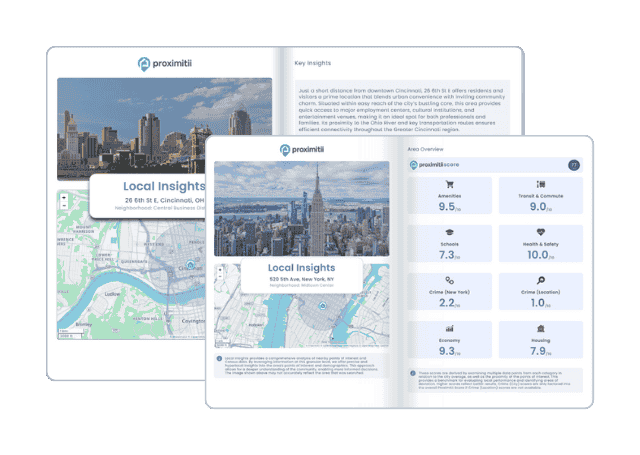| Statistic | Reportedincidents | King Park/100k people | Milwaukee/100k people | Wisconsin/100k people | National/100k people |
| Total crime | 23,154 | 5,706 (estimate) | 4,132 | 1,433 | 2,119 |
| Murder | 134 | n/a | 23.9 | 4.2 | 5.0 |
| Rape | 382 | n/a | 68.2 | 34.8 | 37.5 |
| Robbery | 1,727 | n/a | 308.2 | 39.4 | 60.6 |
| Assault | 5,776 | n/a | 1,030.7 | 200.1 | 256.1 |
| Violent crime | 8,019 | 2,501 (estimate) | 1,431 | 279 | 359 |
| Burglary | 2,175 | n/a | 388.1 | 117.2 | 229.2 |
| Theft | 7,034 | n/a | 1,255.1 | 875.6 | 1,272.1 |
| Vehicle theft | 5,926 | n/a | 1,057.4 | 161.3 | 258.8 |
| Property crime | 15,135 | 3,205 (estimate) | 2,701 | 1,154 | 1,760 |



Why stop at city-to-city? With Local Insights, you can compare neighborhoods, zip codes, or even exact addresses. Access 300+ hyperlocal data points—from schools and crime to housing and amenities—to see which area is the better fit.

| Item | King Park | Milwaukee | Wisconsin |
| Law enforcement employees (officers & civilians) | n/a | 2,577 | 9,355 |
| Police officers & civilians /1000 residents | n/a | 4.3 | 2.4 |
| State | Total offenders | Wisconsin /100K | National /100K |
| Wisconsin | 24,983 | 456 | 266 |
| City | Population | Violent crime/100k people | Property crime/100k people | Total crime/100k people |
| Thiensville, WI | 3,149 | 0 | 213 | 213 |
| Bayside, WI | 4,530 | 23 | 229 | 252 |
| Big Bend, WI | 1,272 | 50 | 207 | 257 |
| River Hills, WI | 1,441 | 0 | 384 | 384 |
| Lannon, WI | 1,184 | 83 | 345 | 429 |
| Elm Grove, WI | 6,156 | 0 | 496 | 496 |
| Richfield, WI | 11,782 | 106 | 440 | 546 |
| Milwaukee, WI | 592,649 | 1,431 | 2,701 | 4,132 |
| City | Population | Violent crime/100k people | Property crime/100k people | Total crime/100k people |
| Baltimore, MD | 602,274 | 1,606 | 4,157 | 5,763 |
| Louisville, KY | 618,733 | 707 | 3,326 | 4,034 |
| Albuquerque, NM | 560,447 | 1,182 | 4,629 | 5,811 |
| Tucson, AZ | 545,340 | 589 | 3,313 | 3,902 |
| Las Vegas, NV | 644,594 | 430 | 2,623 | 3,053 |
| Milwaukee, WI | 592,649 | 1,431 | 2,701 | 4,132 |